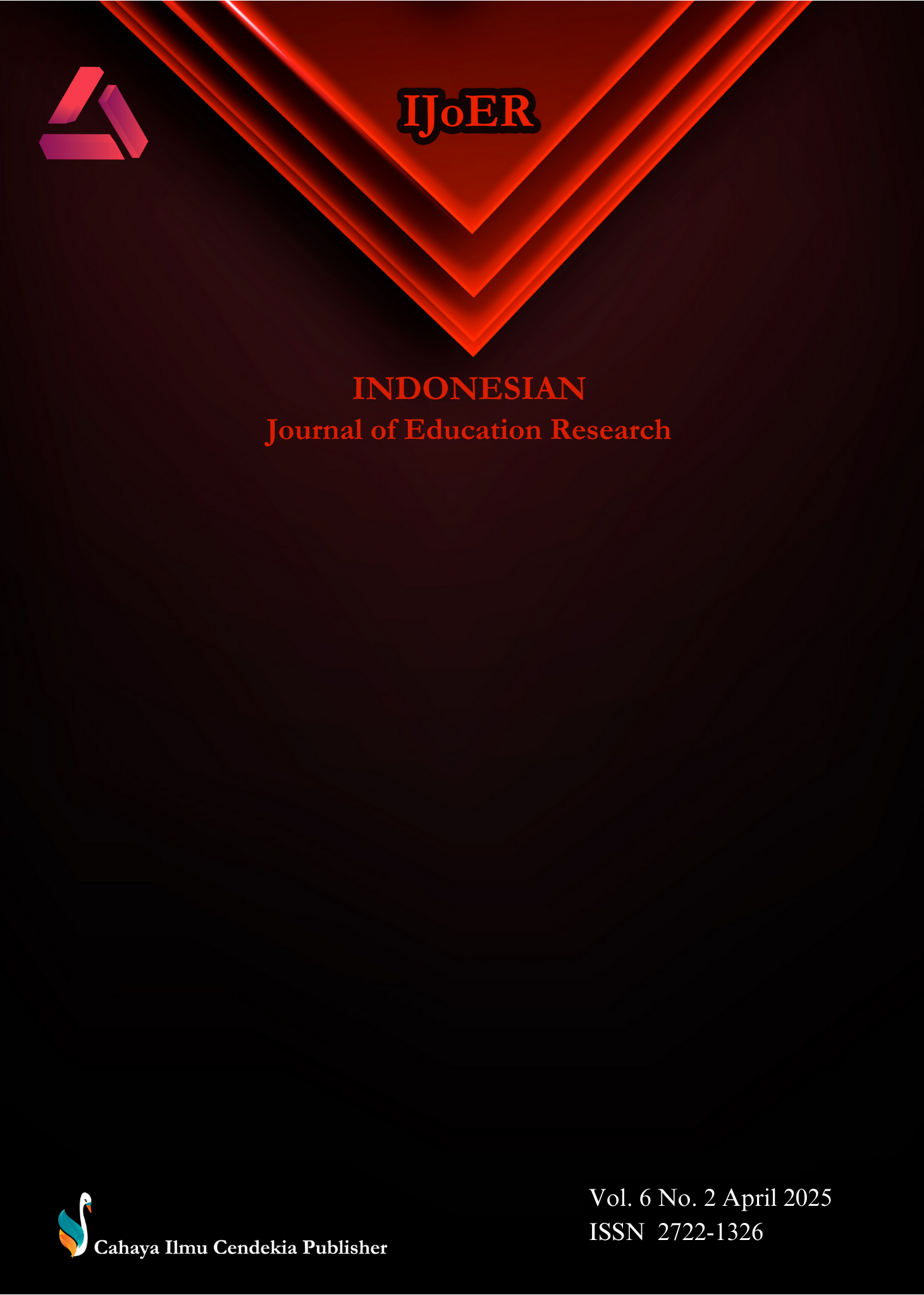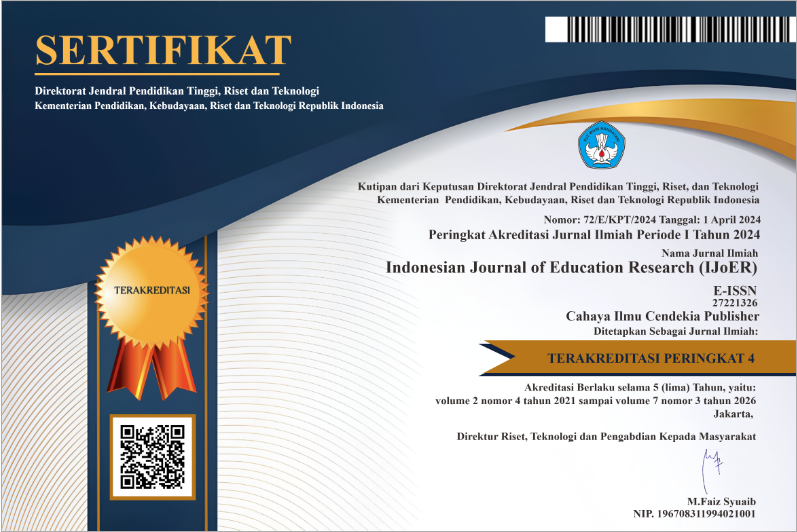The Role of Physical Self-Efficacy in Enhancing Quality of Life Among Rural Filipino Youth
Abstract
Purpose of the study: This study examines the relationship between physical self-efficacy and the quality of life among rural Filipino youth.
Methodology: The study employed a quantitative correlational design. Data were collected from 378 respondents selected via simple random sampling, using a validated physical self-efficacy scale and a quality-of-life assessment tool.
Main Findings: Findings indicate that students exhibited moderate levels of physical self-efficacy and perceived quality of life. The analysis revealed a significant positive relationship between these variables, with a correlation coefficient of r = 0.439 r = 0.439 r = 0.439 (p-value = 0.001). This result suggests that higher physical self-efficacy is associated with improved life satisfaction, highlighting the importance of fostering confidence in physical abilities as a key contributor to overall wellbeing.
Novelty/Originality of this study: This study underscores the pivotal role of physical self-efficacy in enhancing rural youth wellbeing, offering new insights into addressing disparities in resources and opportunities for physical activity. It contributes to sports and education policy by highlighting the need to prioritize physical education programs that build self-efficacy among rural youth. Additionally, the study provides practical applications for community-based interventions, such as designing inclusive sports initiatives and accessible recreational facilities, which can promote active lifestyles and holistic development. These findings serve as a foundation for crafting evidence-based strategies to support rural youth in overcoming socio-economic barriers and achieving improved physical, emotional, and social wellbeing.
References
S. Rathee, “Self-Efficacy, Self-Confidence, and Physical Appearance in Relation to the Activities Performed by Adolescents”.
A. Bandura, “Self-efficacy conception of anxiety,” in Anxiety and self-focused attention, Routledge, 2015, pp. 89–110.
P. A. Anstiss, C. Meijen, and S. M. Marcora, “The sources of self-efficacy in experienced and competitive endurance athletes,” Int J Sport Exerc Psychol, vol. 18, no. 5, pp. 622–638, 2020.
E. Lopez-Bermudez, D. Gomez-Baya, E. Planells, and J. Molina-Lopez, “The mediational role of positive youth development in the relationship between physical activity and health-related quality of life in adolescents from urban and rural environments,” Int J Adolesc Youth, vol. 29, no. 1, p. 2354917, 2024.
X. Ling, J. Chen, D. H. K. Chow, W. Xu, and Y. Li, “The ‘trade-off’ of student well-being and academic achievement: A perspective of multidimensional student well-being,” Front Psychol, vol. 13, p. 772653, 2022.
M. Sejbuk, I. Mirończuk-Chodakowska, and A. M. Witkowska, “Sleep quality: a narrative review on nutrition, stimulants, and physical activity as important factors,” Nutrients, vol. 14, no. 9, p. 1912, 2022.
G. Patnaik, Positive psychology for improving mental health & well-being. Notion Press, 2021.
A. M. Mínguez, “Children’s relationships and happiness: The role of family, friends and the school in four European countries,” J Happiness Stud, vol. 21, no. 5, pp. 1859–1878, 2020.
T. Slavinski, D. Bjelica, D. Pavlović, and V. Vukmirović, “Academic performance and physical activities as positive factors for life satisfaction among university students,” Sustainability, vol. 13, no. 2, p. 497, 2021, doi: 10.3390/su13020497.
M. D. H. Rahiem, S. E. Krauss, and R. Ersing, “Perceived consequences of extended social isolation on mental well-being: Narratives from Indonesian university students during the COVID-19 pandemic,” Int J Environ Res Public Health, vol. 18, no. 19, p. 10489, 2021.
A. E. Sarte Jr and E. J. M. Quinto, “Understanding the importance of weight management: a qualitative exploration of lived individual experiences,” Int J Qual Stud Health Well-being, vol. 19, no. 1, p. 2406099, 2024.
D. H. Kim, J. H. Kim, and K.-J. Park, “The impact of regular exercise, competition experience, and physical self-efficacy on psychological resilience,” Revista de Psicología del Deporte (Journal of Sport Psychology), vol. 32, no. 3, pp. 1–19, 2023.
S. Farzaneh, R. R. Ezabadi, S. S. K. Rad, P. K. Marandi, and V. Ranawat, “Identifying Barriers to Women’s Participation in Sports Activities in both Urban and Rural Communities,” International Journal of Human Movement and Sports Sciences, vol. 9, no. 3, pp. 536–542, 2021.
D. Cruz and C. J. Bryan, “Self-Efficacy and its Relationship to the Resilience of Adolescents in South Central Mindanao, Philippines: A Post-Pandemic Study,” Self-Efficacy and its Relationship to the Resilience of Adolescents in South Central Mindanao, Philippines: A Post-Pandemic Study (July 1, 2023), 2023.
D. Pekmezi, E. Jennings, and B. H. Marcus, “Evaluating and enhancing self-efficacy for physical activity,” ACSMs Health Fit J, vol. 13, no. 2, pp. 16–21, 2009.
A. Almutairi, M. Mourshed, and R. F. M. Ameen, “Coastal community resilience frameworks for disaster risk management,” Natural Hazards, vol. 101, no. 2, pp. 595–630, 2020.
A. M. Rogowska, R. Tataruch, K. Niedźwiecki, and B. Wojciechowska-Maszkowska, “The mediating role of self-efficacy in the relationship between approach motivational system and sports success among elite speed skating athletes and physical education students,” Int J Environ Res Public Health, vol. 19, no. 5, p. 2899, 2022.
C. Peers, J. Issartel, S. Behan, N. O’Connor, and S. Belton, “Movement competence: Association with physical self-efficacy and physical activity,” Hum Mov Sci, vol. 70, p. 102582, 2020.
H.-Y. An, W. Chen, C.-W. Wang, H.-F. Yang, W.-T. Huang, and S.-Y. Fan, “The relationships between physical activity and life satisfaction and happiness among young, middle-aged, and older adults,” Int J Environ Res Public Health, vol. 17, no. 13, p. 4817, 2020.
D. Martinez, “Eudaimonic and hedonic wellbeing among Bangkokians: A qualitative study of Maslow’s needs, intrinsic and extrinsic values,” ASEAN Journal of Management & Innovation, vol. 7, no. 2, pp. 17–47, 2020.
L. E. Gómez Sánchez, R. L. Schalock, and M. Á. Verdugo Alonso, “A new paradigm in the field of intellectual and developmental disabilities: Characteristics and evaluation,” Psicothema, 2021.
A. C. Lyons and J. Kass‐Hanna, “A methodological overview to defining and measuring ‘digital’ financial literacy,” Financial Planning Review, vol. 4, no. 2, p. e1113, 2021.
J. W. Creswell, “Research methods,” JW Creswell, Research design: qualitative, quantitative and mixed methods approaches, pp. 15–17, 2009.
H. K. Mohajan, “Quantitative research: A successful investigation in natural and social sciences,” Journal of Economic Development, Environment and People, vol. 9, no. 4, pp. 50–79, 2020.
M. M. Rahman, M. I. Tabash, A. Salamzadeh, S. Abduli, and M. S. Rahaman, “Sampling techniques (probability) for quantitative social science researchers: a conceptual guidelines with examples,” Seeu Review, vol. 17, no. 1, pp. 42–51, 2022.
S. P. Cumming, R. E. Smith, F. L. Smoll, M. Standage, and J. R. Grossbard, “Development and validation of the achievement goal scale for youth sports,” Psychol Sport Exerc, vol. 9, no. 5, pp. 686–703, 2008.
G. A. Salum, D. L. Patrick, L. R. Isolan, G. G. Manfro, and M. P. Fleck, “Youth Quality of Life Instrument-Research version (YQOL-R): psychometric properties in a community sample,” J Pediatr (Rio J), vol. 88, pp. 443–448, 2012.
D. Jekauc et al., “The effect of self-confidence on performance in sports: a meta-analysis and narrative review,” Int Rev Sport Exerc Psychol, pp. 1–27, 2023.
E. A. Nothnagle and C. Knoester, “Sport participation and the development of grit,” Leis Sci, pp. 1–18, 2022.
B.-C. Serdà, A. Planas-Lladó, A. DelValle, and P. Soler-Masó, “Health promotion in secondary schools: participatory process for constructing a self-assessment tool,” Health Promot Int, vol. 37, no. 2, p. daab123, 2022.
A.-C. Sollerhed, J. Fransson, Ji. Skoog, and P. Garmy, “Physical Activity Levels, Perceived Body Appearance, and Body Functioning in Relation to Perceived Wellbeing Among Adolescents,” Front Sports Act Living, vol. 4, p. 830913, 2022.
P. S. Tandon, E. Kroshus, K. Olsen, K. Garrett, P. Qu, and J. McCleery, “Socioeconomic inequities in youth participation in physical activity and sports,” Int J Environ Res Public Health, vol. 18, no. 13, p. 6946, 2021.
K. Murfay, A. Beighle, H. Erwin, and E. Aiello, “Examining high school student perceptions of physical education,” Eur Phy Educ Rev, vol. 28, no. 3, pp. 704–719, 2022.
M. Vaquero-Solís, M. A. Tapia-Serrano, D. Hortigüela-Alcalá, M. J. Sierra-Díaz, and P. A. Sánchez-Miguel, “Physical activity and quality of life in high school students: Proposals for improving the self-concept in physical education,” Int J Environ Res Public Health, vol. 18, no. 13, p. 7185, 2021.
S. Sharma, H. Åkerlund, H.-W. Liao, and S. Bluck, “Life challenges and resilience: the role of perceived personality continuity,” Aging Ment Health, vol. 25, no. 11, pp. 2090–2099, 2021.
M. Morano, C. Robazza, M. C. Ruiz, S. Cataldi, F. Fischetti, and L. Bortoli, “Gender-typed sport practice, physical self-perceptions, and performance-related emotions in adolescent girls,” Sustainability, vol. 12, no. 20, p. 8518, 2020.
D. H. Schunk and M. K. DiBenedetto, “Self-efficacy and human motivation,” in Advances in motivation science, vol. 8, Elsevier, 2021, pp. 153–179.
S. Di Maio, J. Keller, D. H. Hohl, R. Schwarzer, and N. Knoll, “Habits and self‐efficacy moderate the effects of intentions and planning on physical activity,” Br J Health Psychol, vol. 26, no. 1, pp. 50–66, 2021.
K. Bertills, M. Granlund, Ö. Dahlström, and L. Augustine, “Relationships between physical education (PE) teaching and student self-efficacy, aptitude to participate in PE and functional skills: with a special focus on students with disabilities,” Phys Educ Sport Pedagogy, vol. 23, no. 4, pp. 387–401, 2018.
K. Mouratidis, “Built environment and social well-being: How does urban form affect social life and personal relationships?,” Cities, vol. 74, pp. 7–20, 2018.
A. Twum-Antwi, P. Jefferies, and M. Ungar, “Promoting child and youth resilience by strengthening home and school environments: A literature review,” Int J Sch Educ Psychol, vol. 8, no. 2, pp. 78–89, 2020.
F. Pedalino and A.-L. Camerini, “Instagram use and body dissatisfaction: The mediating role of upward social comparison with peers and influencers among young females,” Int J Environ Res Public Health, vol. 19, no. 3, p. 1543, 2022.
N. P. Gothe, D. K. Ehlers, E. A. Salerno, J. Fanning, A. F. Kramer, and E. McAuley, “Physical activity, sleep and quality of life in older adults: influence of physical, mental and social well-being,” Behavioral sleep medicine, vol. 18, no. 6, pp. 797–808, 2020.
S. Evans-Lacko et al., “Socio-economic variations in the mental health treatment gap for people with anxiety, mood, and substance use disorders: results from the WHO World Mental Health (WMH) surveys,” Psychol Med, vol. 48, no. 9, pp. 1560–1571, 2018.
Z. Zhou and Q. Cheng, “Relationship between online social support and adolescents’ mental health: A systematic review and meta‐analysis,” J Adolesc, vol. 94, no. 3, pp. 281–292, 2022.
B. R. K. Sinha, Multidimensional approach to quality of life issues: A spatial analysis. Springer, 2019.
D. Hernández-Torrano et al., “Mental health and well-being of university students: A bibliometric mapping of the literature,” Front Psychol, vol. 11, p. 1226, 2020.
P. Singh, “NEP 2020: The Status of the Role of Infrastructure in Enhancing Physical Education Programs”.
Copyright (c) 2025 Marlon A. Mancera

This work is licensed under a Creative Commons Attribution 4.0 International License.
Authors who publish with this journal agree to the following terms:
- Authors retain copyright and acknowledge that the Indonesian Journal of Education Research (IJoER) is the first publisher licensed under a Creative Commons Attribution 4.0 International License.
- Authors are able to enter into separate, additional contractual arrangements for the non-exclusive distribution of the journal's published version of the work (e.g., post it to an institutional repository or publish it in a book), with an acknowledgment of its initial publication in this journal.
- Authors are permitted and encouraged to post their work online (e.g., in institutional repositories or on their website) prior to and during the submission process, as it can lead to productive exchanges and earlier and greater citation of published work.







.png)
.png)




















